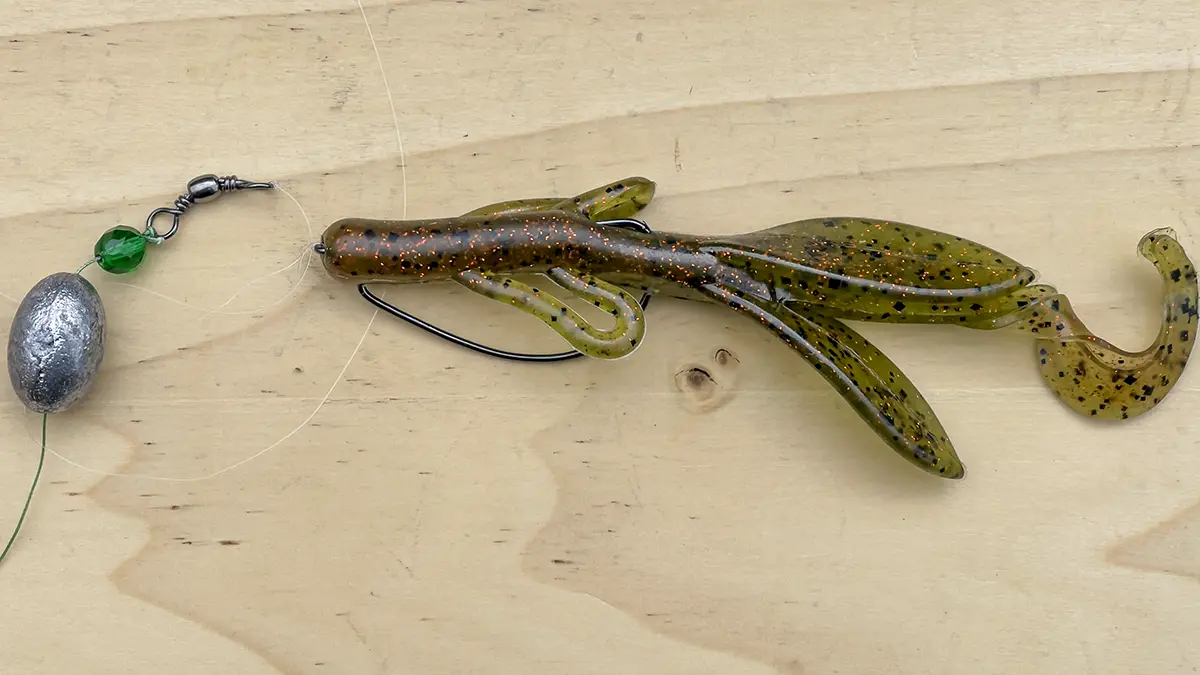Fishing isn’t just a sport or a hobby; for many, it’s an art form. It combines patience, skill, and the right equipment to outsmart a fish and reel it in successfully. Among the multitude of techniques and rigs anglers use, the Carolina Rig stands out as one of the most versatile and effective methods for catching a variety of fish, especially bass.
This guide aims to take you through the ins and outs of the Carolina Rig, from its components to its usage, as well as some pro tips to make your fishing trip a huge success.
Table of Contents
ToggleThe Basics
One of the first things every angler should understand is what a Carolina Rig actually is and why it’s so popular. This section will provide you with basic information about the Carolina Rig, reasons for its wide-ranging usage, and the conditions in which it works best.
What is the Carolina Rig?
The Carolina Rig is a popular method of fishing used primarily for targeting bottom-feeding fish like bass. At its most basic, the rig consists of a weighted system on your main line above a leader with a hook at the end.
This design allows the bait to move freely and naturally in the water, making it an irresistible choice for fish looking for an easy meal. The setup aims to keep the bait near the bottom of the water column, mimicking natural prey behavior.
As a result, it’s highly effective for enticing those bottom-feeding species. The rig provides a sensitive setup that allows you to feel even the faintest nibbles, helping you to hook the fish effectively.
Why Use It?
Now that you understand its basic structure, you might wonder what makes the Carolina Rig so special. First, it’s highly versatile. Whether you’re fishing in a lake, pond, or river, this rig can be adapted to suit the conditions.
- Versatility: Works well in various water bodies and depths
- Sensitivity: Allows for better detection of bites
- Targeting Bottom-Feeders: Especially effective for species like bass
Secondly, the Carolina Rig is incredibly effective for covering a lot of water quickly. If you’re unsure where the fish are hiding, this rig will enable you to search a broader area in a shorter amount of time. Lastly, its simple design makes it accessible for both beginners and experienced anglers, making it a staple in almost every tackle box.
Ideal Conditions
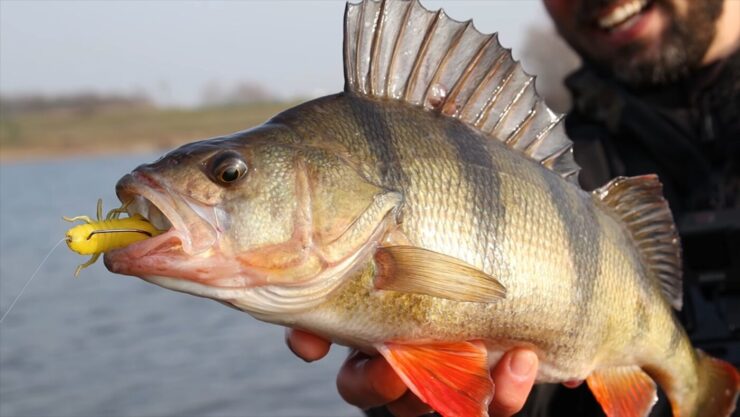
When should you opt for a Carolina Rig? Understanding the ideal conditions for this rig can significantly increase your catch rate. Generally, this setup excels in clear water where fish are more likely to be lured by the natural-looking bait.
Warm, clear water often produces the best results when using this setup. Fish are more active in these conditions and more likely to be tempted by the bait on your Carolina Rig. On the other hand, if you’re fishing in muddy or murky water, you may want to opt for a different rig that can attract fish using vibration or noise, as visibility won’t be as clear.
Weather conditions also play a role; overcast days can be as effective as sunny days, depending on the behavior of the fish.
Components
The effectiveness of a Carolina Rig is hugely dependent on its components. From the leader material to the type of hook and weight used, each piece has a significant role in how well your rig will perform. This section will delve into each of these essential parts.
The Leader
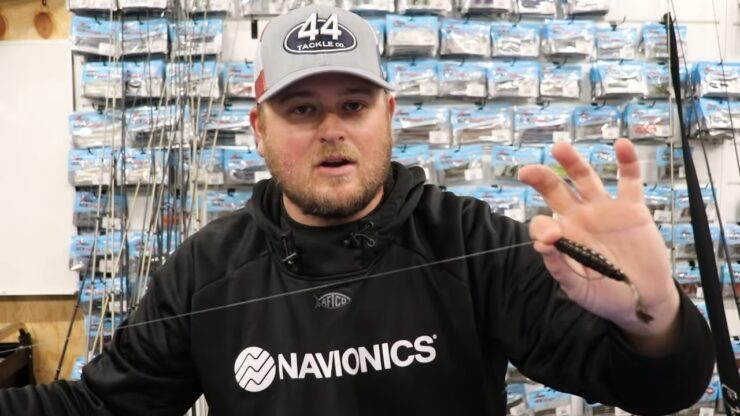
The leader is a crucial component of any Carolina Rig. Typically made of fluorocarbon or monofilament, the leader connects the hook to the mainline, separated by a weight and a bead. The length of the leader can vary depending on the fishing conditions and what kind of action you want your bait to have.
- Fluorocarbon: Nearly invisible underwater and abrasion-resistant
- Monofilament: Offers more stretch, which can be beneficial for certain species
- Leader Length: Ranges from 12 to 48 inches, depending on conditions and desired bait action
Fluorocarbon is usually the material of choice for most anglers due to its low visibility underwater and high abrasion resistance. However, monofilament can offer more stretch, which could be beneficial when targeting species that are known for their hard strikes.
The Hook
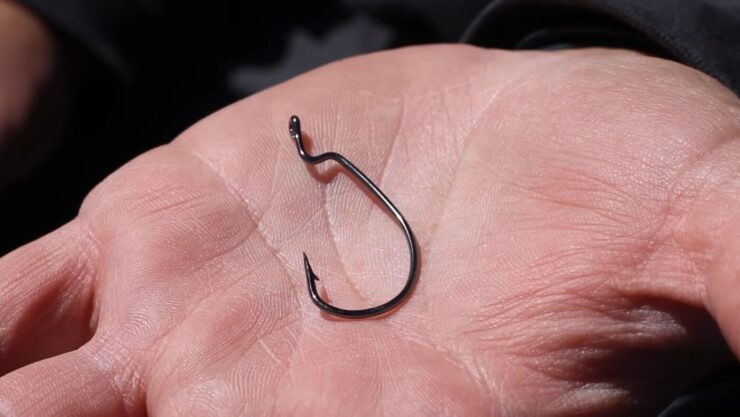
The type of hook you choose can make a massive difference in your success rate. Most anglers opt for an offset worm hook when setting up their Carolina Rig, especially when using soft plastic worms or lizards as bait.
- Offset Worm Hook: Ideal for soft plastics
- Wide Gap Hook: Provides better hook-up ratios
- Hook Size: Typically ranges from 1/0 to 4/0, depending on the bait used
The offset design allows for better hook penetration, increasing your chances of a successful catch. Some anglers also use wide gap hooks, which can offer better hook-up ratios, especially when using bulkier soft plastics. The size of the hook should be compatible with the size of the bait you’re using, with sizes typically ranging from 1/0 to 4/0.
The Weight
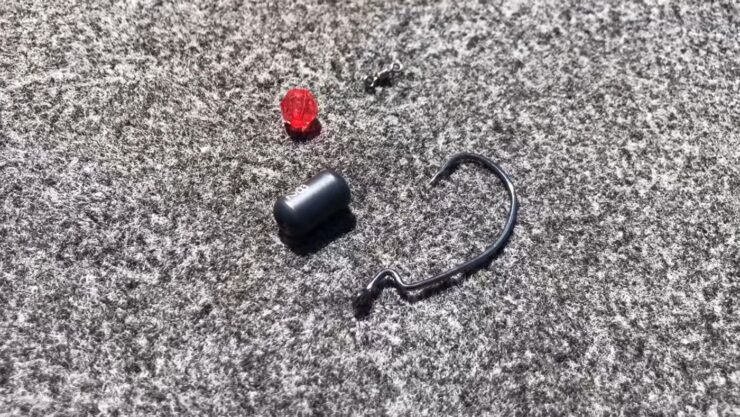
When it comes to the Carolina Rig, the weight serves multiple purposes: it helps cast your bait further, keeps it near the bottom, and also creates a clicking noise when it hits the bead, attracting nearby fish.
- Bullet Weights: Commonly used due to their streamlined design
- Tungsten vs Lead: Tungsten is denser and more environmentally friendly
- Weight Size: Ranges from 1/4 to 1 oz, depending on fishing conditions
Bullet weights are commonly used for Carolina Rigs due to their streamlined design, which reduces the chances of snagging. As for the material, tungsten is denser than lead, offering better sensitivity and being more environmentally friendly. The size of the weight can range from 1/4 to 1 oz, depending on the depth of the water and the strength of the current.
Setting Up the Carolina Rig
Setting up a Carolina Rig is relatively straightforward, but some tips and tricks can make your rig more effective. In this section, we will go over the steps to tie a Carolina Rig, the importance of rig length, and some advanced techniques for optimizing your setup.
How to Tie It
Tying a Carolina Rig involves a series of steps that include adding the weight, bead, and then tying a swivel to your main line, followed by attaching the leader and hook. While the process might seem complicated, it’s relatively straightforward once you get the hang of it.
- Slide a bullet weight onto your main line, pointy end first.
- Add a bead immediately following the weight.
- Tie a swivel onto the main line after the bead.
- Attach a leader of your choice to the other end of the swivel.
- Finally, tie your hook to the end of the leader.
Even if you’re a beginner, you’ll find that setting up a Carolina Rig is not overly complicated. It allows for customization at every step, depending on your fishing conditions and target species.
Importance of Rig Length
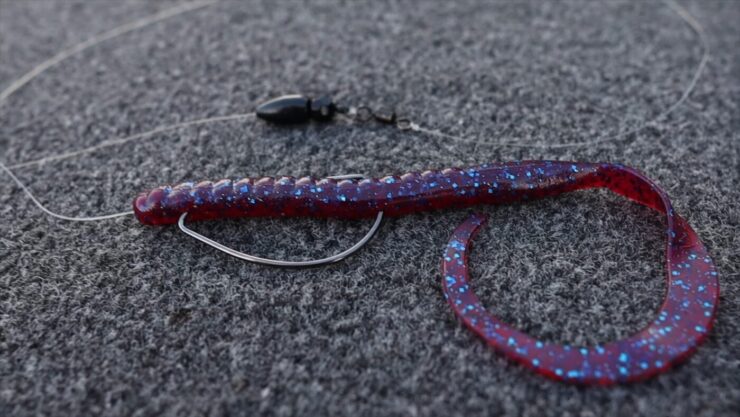
The length of your Carolina Rig—both the leader and the overall length—can have a significant impact on its effectiveness. A shorter leader (around 12 to 18 inches) is generally recommended for beginners, as it’s easier to manage.
- Short Leader: Easier to manage and works well in heavy cover
- Long Leader: Provides more natural bait action but can be hard to cast
- Customization: Adjusting the leader length can help in targeting specific fish behaviors
On the other hand, a longer leader (up to 48 inches) allows for more natural bait action. However, it can be more challenging to cast, especially in windy conditions. The ability to adjust the length of your Carolina Rig is one of its greatest advantages, as you can easily customize it to target specific fish behaviors or adapt to various fishing environments.
Advanced Techniques
Once you’ve mastered the basics of setting up a Carolina Rig, you may be interested in some advanced techniques to up your game. Some anglers opt for a double-hook setup, while others experiment with different leader materials to target specific species.
- Double-Hook Setup: Increases chances of hooking multiple fish
- Specialty Leaders: Using leaders with unique properties for targeting specific species
- Bead Variations: Experimenting with different bead materials for added noise or visual appeal
The double-hook setup involves adding a second hook a few inches above the primary one, thereby increasing your chances of hooking multiple fish. When it comes to leader material, some experienced anglers use fluorocarbon leaders with unique properties like UV resistance or abrasion resistance, specially designed for targeting specific fish species. Finally, don’t hesitate to experiment with different bead materials and colors. The right combination could make your Carolina Rig even more irresistible to fish.
Pro Tips for Maximizing the Carolina Rig’s Potential
Mastering the Carolina Rig goes beyond knowing its components and setup; it’s also about utilizing it effectively. In this section, we’ll explore professional tips that can help you get the most out of your Carolina Rig, the importance of lure selection, and some advanced tactics for specific conditions.
Pro Tips You Should Know
Once you’re comfortable with the basics of the Carolina Rig, integrating these pro tips can significantly enhance your angling experience. From fine-tuning your presentation to modifying your rig on the go, these suggestions can make all the difference.
- Drag, Don’t Hop: The Carolina Rig is designed for a slow, dragging action to mimic natural prey.
- Use Your Rod: A long, medium-heavy rod can provide better casting and sensitivity.
- Knot Integrity: Always double-check your knots, especially when fishing in heavy cover or around structures.
Dragging the rig slowly along the bottom allows the bait to cover more area and attracts the attention of bottom-feeders. Use your rod to control the rig’s movement, not the reel. A medium-heavy rod around 7 to 8 feet long usually offers the right blend of casting distance and sensitivity. Lastly, always double-check the integrity of your knots. A failed knot can cost you not just a fish but also your rig.
Importance of Lure Selection
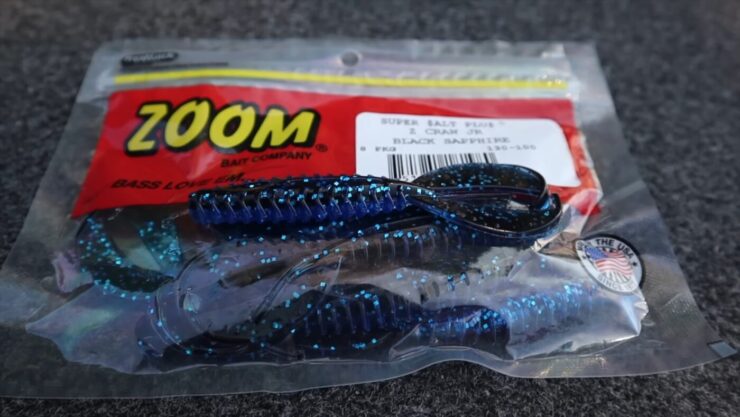
Picking the right lure to attach to your Carolina Rig can be crucial. Soft plastic baits like worms, lizards, and creature baits are popular choices, but each has its unique advantages depending on the targeted species and fishing conditions.
- Soft Plastic Worms: Classic and versatile, great for clear water.
- Lizards and Creature Baits: Offer more action, making them effective in warmer water.
- Seasonal Choices: Consider seasonal patterns; crawfish imitations are excellent in spring.
Soft plastic worms are often the go-to lure for their versatility and lifelike action. Lizards and creature baits tend to have more appendages, creating additional action that can be irresistible to active fish. Consider the seasons as well: in the spring, for instance, baits that imitate crawfish can be extremely effective as they coincide with the natural feeding patterns of many fish.
Advanced Tactics for Specific Conditions
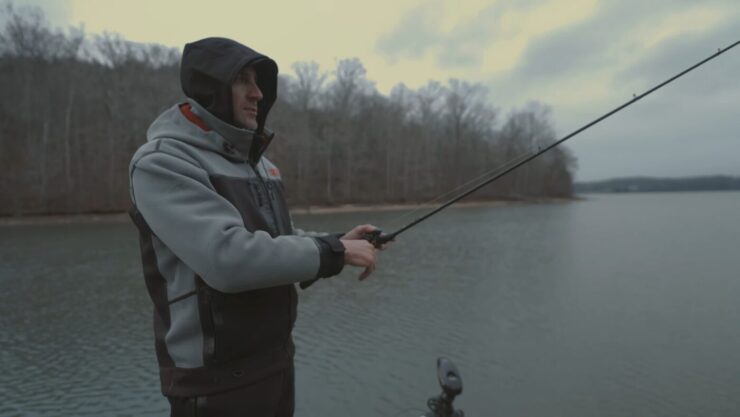
In certain conditions, you’ll want to tweak your Carolina Rig approach for optimum results. Whether it’s varying your retrieve speed, using a floating lure, or even incorporating scent, sometimes the details make all the difference.
- Retrieve Speed: In colder water, a slower retrieve can be more effective.
- Floating Lures: These can keep the bait off the bottom and are useful in weedy areas.
- Scent and Flavor: Adding these can make the lure more enticing, encouraging fish to hold on longer.
In colder water conditions, fish are generally less active. A slower retrieve can be more appealing in these situations. If you’re fishing in weedy or rocky areas, using a floating lure can keep your bait off the bottom, reducing snags. Lastly, consider adding scent or flavor to your bait; this can make your lure more enticing and encourage fish to hold onto the bait longer, giving you more time to set the hook.
Troubleshooting Common Issues
Even the most experienced anglers face challenges, and the Carolina Rig is no exception. In this section, we’ll examine how to solve common issues such as dealing with snags, minimizing line twists, and optimizing your rig for windy conditions.
Dealing with Snags
Getting snagged is an angler’s nightmare, but it’s an issue you can often avoid or resolve with a little know-how.
- Weedless Hooks: These can minimize the risk of snagging in heavy cover.
- Sensitivity: A sensitive rod can help you feel when you’re about to get snagged.
- Snag Retrieval: Techniques like popping or shaking the line can sometimes free a snag.
Using weedless hooks or hooks with a weed guard can drastically reduce the risk of snagging when you’re fishing in areas with a lot of cover. A highly sensitive rod can help you feel when you’re about to hit a snag, allowing you to stop before it’s too late. If you do get snagged, don’t panic; often, a bit of line popping or shaking can free your rig.
Minimizing Line Twist
Line twist is another common issue when fishing with any rig, including the Carolina Rig. Luckily, there are a few ways to combat this annoyance.
- Swivels: A high-quality swivel can significantly reduce line twist.
- Line Quality: Opt for a high-quality, low-memory line to minimize twists.
- Manual Untwisting: Occasionally, letting your line untwist can maintain its integrity.
Swivels are not just for connecting your leader; a good one can also help minimize line twists. Opt for a high-quality, low-memory line, which will be less prone to twisting. If you notice that your line is beginning to twist, take a moment to let it unwind manually by disconnecting the rig and allowing the line to untwist in the water.
Optimizing for Windy Conditions
Windy conditions can make fishing with a Carolina Rig challenging. However, a few adjustments can keep you on track.
- Heavier Weights: Opt for heavier bullet weights to maintain control during casting.
- Shorter Leaders: A shorter leader can offer better control in windy conditions.
- Casting Technique: Adjust your casting technique to deal with wind direction.
A heavier weight can make casting easier when the wind is working against you. Likewise, a shorter leader may offer better control in these situations. Pay attention to the wind direction and adjust your casting technique accordingly; sometimes, a sidearm cast can be more effective in combating the wind.
FAQs
Can I use the Carolina Rig for saltwater fishing?
Yes, the Carolina Rig can be adapted for saltwater fishing. However, you’ll want to make sure all the components are corrosion-resistant.
Opt for hooks, swivels, and weights made of stainless steel or other saltwater-friendly materials. You may also want to choose bait that mimics the forage in the saltwater environment you’ll be fishing in.
Is the Carolina Rig suitable for ice fishing?
The Carolina Rig is generally not the first choice for ice fishing because it’s designed for covering more ground through casting and retrieval, which is less effective through an ice hole.
However, some anglers have modified it for vertical jigging beneath the ice. If you decide to try it, a shorter leader and lighter weight are recommended.
How do I choose the right line weight for my Carolina Rig?
Choosing the right line weight depends on a few factors, such as fishing environment, targeted species, and personal preference. For most freshwater bass fishing scenarios, a line in the 12-20 pound test range is usually sufficient.
If you’re targeting larger species or fishing in areas with a lot of cover or obstacles, you may want to go with a heavier line.
What are the environmental impacts of using lead weights in my Carolina Rig?
Using lead weights can have negative environmental impacts as lead is a toxic metal that can poison wildlife. Some areas have regulations against using lead fishing tackle. It’s advisable to opt for eco-friendly alternatives like tungsten or steel, which are non-toxic and equally effective.
How often should I replace the components of my Carolina Rig?
The longevity of your Carolina Rig components depends on usage and the conditions you’re fishing in. Hooks can become dull, swivels can wear out, and the line can suffer from abrasion.
It’s a good practice to check all components after each fishing trip and replace them as necessary to maintain the rig’s effectiveness.
Can I use artificial baits like soft plastics with scent built-in for my Carolina Rig?
Absolutely, many anglers use scented soft plastics or even those infused with flavor to make the lure more enticing for fish. These can be particularly effective when fish are more finicky or the water clarity is low, as the added scent can attract fish to your bait.
Final Words
By now, you should have a robust understanding of what the Carolina Rig is, how to set it up, and how to maximize its potential. With its versatility and effectiveness, this rig deserves a spot in every angler’s toolbox. Whether you’re targeting bass in freshwater or exploring other species, the Carolina Rig provides a reliable and rewarding fishing experience.
Related Posts:
- Heavy Duty Fishing: 11 Best Rods And Reels For Big Fish 2024
- 17 Best Trolling Reels 2024 - Enjoy your Fishing Adventure
- 15 Best Baitcasting Reel Under $100 2024 - Improve…
- 10 Best Saltwater Fishing Boats - Ultimate Angling Adventure
- 12 Best Fishing Lures Ever 2024 - Baits That…
- 16 Best Kayak For Beginners 2024 - Kayaking Adventure Gear

